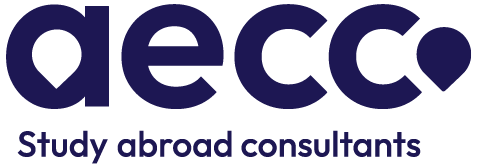Read on to get your latest updates on Universities, Courses Offered, Student Visa Updates, and lots more!


Hello, aspiring scholars! Are you from India and torn between studying in Canada or the USA? It's a choice between two incredible but distinct experiences. Imagine immersing yourself in the diverse and welcoming culture of Canada, with its stunning landscapes and top-tier universities. On the flip side, the USA offers unmatched opportunities for innovation and a fast-paced lifestyle synonymous with the American Dream. Both destinations have their unique charm and academic excellence, but the decision hinges on what resonates with your personal and educational aspirations. Let's unwrap the nuances of studying in these two remarkable countries, shall we?
The US, famed for its prestigious Ivy League schools, and Canada, with its fast-growing universities, both provide unique and high-quality educational experiences. Let's take a closer look at what distinguishes their academic landscapes.
United States
In the US, the Ivy League stands out with its elite group of eight universities, including renowned names like Harvard, Yale, Princeton, and Columbia. Known for their academic brilliance and selective admissions, they're a symbol of educational prestige. But that's not all the US offers. Beyond the Ivy League, a plethora of universities provide diverse programs across various disciplines. These institutions are also at the forefront of research and innovation, drawing in students globally with their cutting-edge advancements.
Canada
Canadian universities like the University of Toronto and McGill are gaining global fame, offering quality education that's more accessible than the Ivy League, and attracting more international students. They're particularly noted for their inclusive policies and diverse student bodies.
Comparative Analysis
Ivy League vs. Canadian Universities: While the Ivy League represents the pinnacle of academic prestige in the US, Canadian universities offer quality education with a more inclusive approach.
Global Rankings: US universities often dominate global rankings, but Canadian universities are steadily climbing these charts.
Understanding the eligibility criteria for educational programs in the US and Canada is crucial for prospective students. This section compares the entrance requirements, including exams and language proficiency, in both countries.
United States
Canada
Comparative Chart
|
Criteria |
USA |
Canada |
|
Undergraduate Entrance Exams |
SAT/ACT |
Less emphasis on standardised tests |
|
Graduate Entrance Exams |
GRE/GMAT |
Varies by program |
|
Language Proficiency |
TOEFL/IELTS |
TOEFL/IELTS |
This section provides an overview of the cost of studying in the top student cities in the USA and Canada, offering insights into both the academic and cultural environments.
United States
New York City offers diverse cultures and Columbia University with tuition of around $30,000 - $60,000/year. Boston, home to Harvard and MIT, ranges from $45,000 - $70,000/year in tuition.
Canada
In Toronto, the University of Toronto stands out for its impressive research and vibrant multicultural vibe. Expect tuition costs to be between CAD 20,000 and CAD 40,000 annually.
Vancouver: Known for its scenic beauty and top universities like the University of British Columbia. Average tuition: CAD 18,000 - CAD 35,000 per year.
Comparative Analysis
Cultural Experience: Both countries offer vibrant cultural experiences, but the cost of living and tuition in Canadian cities is generally lower than in the US.
Academic Environment: While the US boasts more globally ranked universities, Canada provides a more affordable education without compromising on quality.
If you're eyeing studying abroad, getting a real feel for the cost of living in your potential new home is super important. Let's take a friendly peek at how your wallet might fare in the USA versus Canada, covering all the must-knows from rent to those everyday expenses.
Comparative Table of Average Costs
|
Expense Category |
USA (Average Cost) |
Canada (Average Cost) |
|
Accommodation (Monthly Rent) |
$1,000 - $2,000 |
CAD 1,200 - CAD 2,400 |
|
Utilities (Monthly) |
$100 - $200 |
CAD 150 - CAD 250 |
|
Groceries (Monthly) |
$200 - $400 |
CAD 250 - CAD 500 |
|
Transportation (Monthly) |
$100 - $300 |
CAD 100 - CAD 300 |
|
Miscellaneous |
$150 - $300 |
CAD 200 - CAD 400 |
Note: These figures are approximations and can vary based on location and lifestyle.
Navigating the job market and understanding salary expectations is crucial for anyone planning to work or study in the USA or Canada. This section delves into the employment landscape, offering insights into the opportunities and financial prospects in both countries.
United States
Holding a bachelor's degree in the U.S. often means earning about $60,000 annually, but in major urban areas like New York and San Francisco, you can expect even higher salaries, thanks to the bustling job markets in these cities.
Canada
Growing Opportunities: In Canada, the job market is experiencing a notable expansion, with technology, environmental science, and healthcare leading the way as key growth areas. This growth reflects Canada's commitment to innovation and its focus on developing industries that address both technological advancements and environmental concerns.
Average Salaries: Canadian bachelor's degree holders generally see average salaries of around CAD 50,000, with variations depending on industry and location.
Industry-Specific Trends: Certain sectors like tech in Toronto or energy in Alberta offer particularly lucrative opportunities.
Comparative Analysis
|
Country |
Average Salary (Bachelor's Degree) |
Notable High-Paying Sectors |
|
USA |
$60,000 |
Technology, Engineering, Finance |
|
Canada |
CAD 50,000 |
Technology, Environmental Science |
In the realm of higher education, the variety and richness of available courses play a crucial role in shaping your academic journey and future career path. This segment delves into the educational landscapes of the USA and Canada, shedding light on the wide array of courses and specialised programs each country offers, illustrating how they cater to diverse academic interests and career aspirations.
United States
Wide Range of Specialisations: The U.S. offers a wide array of courses, particularly excelling in engineering, business, and computer science, providing diverse academic choices for students.
Flexible Academic Structure: American universities often offer a flexible curriculum, allowing students to explore various disciplines before declaring a major.
Canada
Focused and High-Quality Education: Canadian universities provide high-quality education with a more focused approach, offering specialised programs in fields like environmental science, media, and journalism.
Inclusive Educational Environment: Canadian institutions are celebrated for their inclusive policies and diverse student bodies.
Comparative Highlights
USA: Greater variety of courses and flexibility in choosing majors.
Canada: More focused courses with an emphasis on inclusivity and diversity.
Course Options|
Country |
Course Variety |
Specialisations |
|
USA |
Extensive |
Engineering, Business, IT |
|
Canada |
Focused |
Environmental Science, Media |
In conclusion, when Indian students weigh the options between Canada and the USA for their studies, they're looking at two distinct yet equally promising paths. The USA, with its wide range of specialised courses and higher salary prospects, offers a dynamic and diverse academic environment. On the other hand, Canada stands out with its inclusive educational policies, focused course offerings, and a growing job market that's particularly welcoming to international students. Ultimately, the choice hinges on individual preferences, career aspirations, and the kind of educational and cultural experience one seeks. Both countries offer unique opportunities and advantages, making them top choices for Indian students aiming to study abroad.
Ready to explore your future in Canada or the USA? Join AECC's exclusive session on 'Canada vs USA for Indian Students' and unlock the best path for your international education journey. Reserve your spot now and start shaping your dream career today with AECC!
Education is generally more affordable in Canada than in the USA, especially compared to top U.S. universities.
Canada offers easier pathways to residency, while the U.S. has a larger job market but stricter visa rules.
Canada is known for inclusive healthcare and high living standards; the U.S. has excellent but expensive healthcare.
The U.S. offers a flexible curriculum with a wide range of courses, while Canada focuses on high-quality, specialised education.
Consider course preferences, budget, career goals, and immigration policies for long-term prospects in both countries.

Test Preparation
Premium Counselling
Get in Touch
About Us
Our Partners
Quick Links
Book your FREE consultation with Certified Counsellors